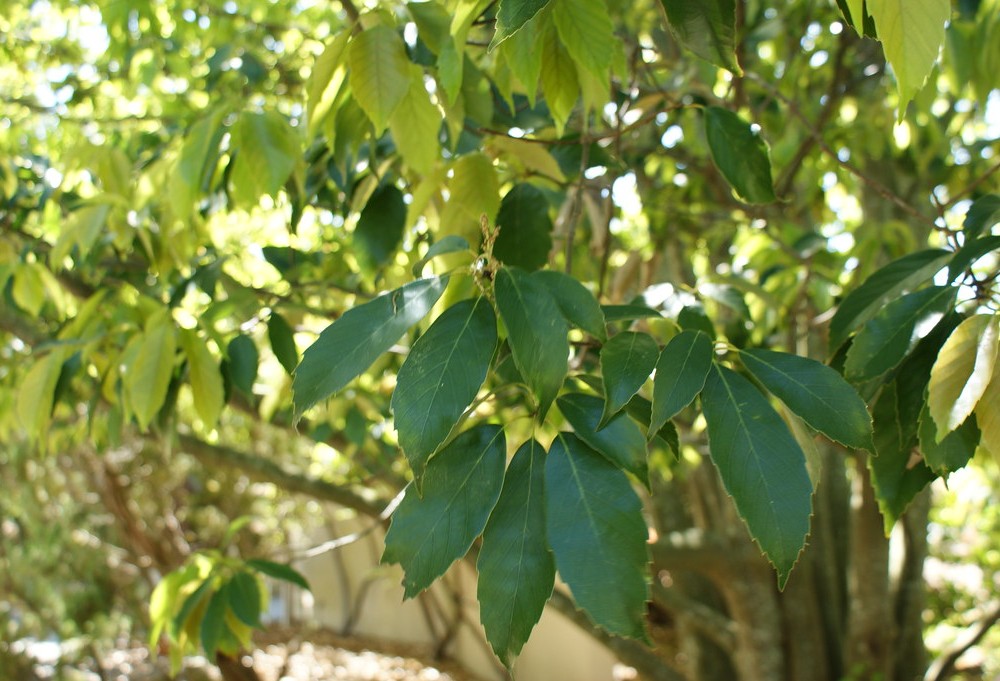Ring-cupped oak
(Lithocarpus glaber)

Description
Quercus glauca (syn. Cyclobalanopsis glauca), commonly called ring-cupped oak or Japanese blue oak, is a tree in the beech family (Fagaceae). It is native to eastern and southern Asia, where it is found in Afghanistan, Bhutan, China, northern and eastern India, southern Japan, Kashmir, Korea, Myanmar, Nepal, and Vietnam. Quercus glauca is a small to medium-sized evergreen broadleaf tree growing to 15–20 m tall. The leaves are a distinct deep purple-crimson on new growth, soon turning glossy green above, glaucous blue-green below, 60–13 mm long and 20–50 mm broad, with a serrated margin. The flowers are catkins, and the fruit are acorns 1–1.6 cm long, with series of concentric rings on the outside of the acorn cup (it is in the "ring-cupped oak" sub-genus). It is planted as an ornamental tree in regions of Europe and North America with mild winters. Its acorns are edible. When dried and ground into powder they can be mixed with cereals and used as flour. The roasted seeds can be used as a coffee substitute. The wood of Quercus glauca is a valuable fuelwood. Its leaves and stems are relished by deer. An oak is a tree or shrub in the genus Quercus ("oak tree") of the beech family, Fagaceae. There are approximately 500 extant species of oaks. The common name "oak" also appears in the names of species in related genera, notably Lithocarpus (stone oaks), as well as in those of unrelated species such as Grevillea robusta (silky oaks) and the Casuarinaceae (she-oaks). The genus Quercus is native to the Northern Hemisphere, and includes deciduous and evergreen species extending from cool temperate to tropical latitudes in the Americas, Asia, Europe, and North Africa. North America has the largest number of oak species, with approximately 160 species in Mexico of which 109 are endemic and about 90 in the United States. The second greatest area of oak diversity is China, with approximately 100 species. Oaks have spirally arranged leaves, with lobate margins in many species; some have serrated leaves or entire leaves with smooth margins. Many deciduous species are marcescent, not dropping dead leaves until spring. In spring, a single oak tree produces both male flowers (in the form of catkins) and small female flowers, meaning that the trees are monoecious. The fruit is a nut called an acorn or oak nut borne in a cup-like structure known as a cupule; each acorn contains one seed (rarely two or three) and takes 6–18 months to mature, depending on their species.
Taxonomic tree:







